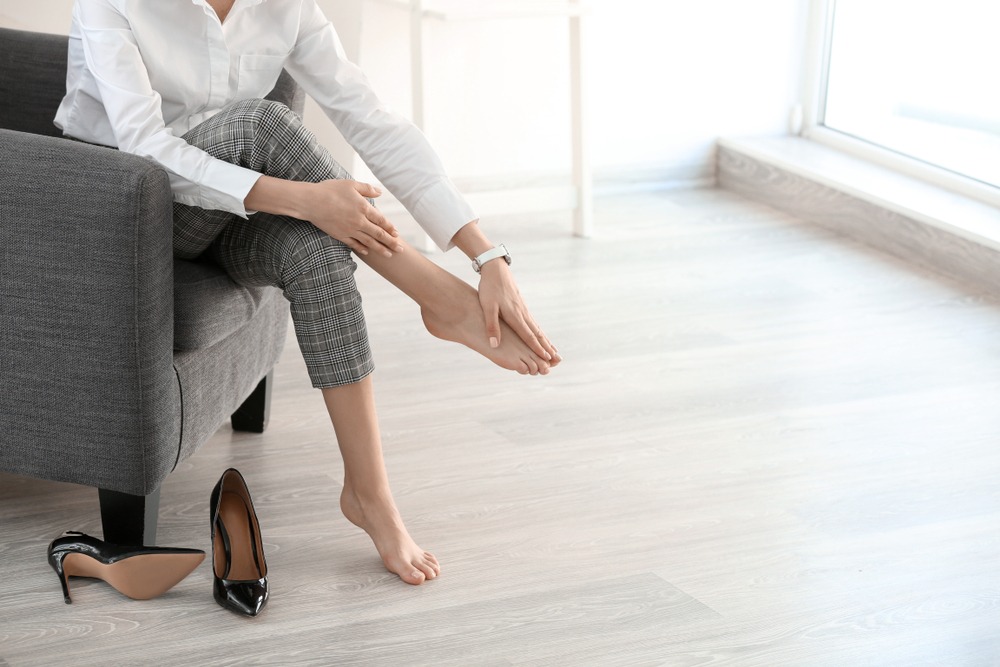
Morton’s Neuroma is a benign condition that can cause discomfort at rest and during activity. Although this foot neuroma may not present any symptoms in some cases, it is important to treat it as soon as initial pain appears in the nerves of your foot. Here’s how to identify, prevent and treat Morton’s Neuroma.
What is Morton’s neuroma?
Morton’s neuroma, also known as foot neuroma or Morton’s toe, is a localized pain between the toes that can be felt under the forefoot. It is caused by a thickened nerve (the neuroma), which is irritated by a deformation of the foot, repeated impact, or trauma. Generally, this nerve is located between the third and fourth toes. The sharp stinging pain in your toes can be intermittent. The pain in the nerves of your foot can resemble an electrical discharge, and you may experience burning or numbness. Morton’s neuroma is often felt in one foot, but sometimes both feet are affected. Seeing with the naked eye can be challenging, but sometimes you can see swelling between the toes.
H3 – Is Morton’s toe a common problem?
Morton’s neuroma is a moderately encountered problem which mainly affects women. In a lesser proportion, it can also affect men.
Different causes of Morton’s neuroma
The exact causes of Morton’s neuroma are not known. Factors such as wearing shoes that are too narrow, ill-fitting or with high heels can cause sharp stinging pain in the toes. In addition, a deformation of the bones of the foot can put pressure on the nerves of your foot, leading to Morton’s neuroma. Flat feet, high arches, bunions, and hammertoes are frequently associated with this pathology.
H3 – Who is most likely to be affected by Morton’s neuroma?
Morton’s neuroma affects adult women more often than men, and mainly over the age of 50.
Symptoms of Morton’s neuroma
Patients with Morton’s neuroma may feel that something is bothering them in their shoe, such as a crease in a sock or a small stone. The pain and tingling may be intensified when pressure is applied to the foot. For example, putting on shoes, walking, or standing for long periods can aggravate the pain. The same is true with actions that require the foot to exert pressure on an object, such as pedalling a bicycle. However, there are no obvious signs (no redness, for example), except in some cases where slight swelling between the toes can be seen. However, visiting a chiropodist if Morton’s neuroma symptoms persist and avoiding invasive treatment is recommended. You can also search the Internet for Morton’s neuroma pictures if you think you are suffering from this type of pain.
Diagnosis of Morton’s neuroma by chiropodists
To diagnose Morton’s neuroma, the chiropodist performs a podiatric exam, focusing on the nerves in the foot. This exam is often called Morton’s neuroma test. If necessary, the chiropodist may ask the patient to undergo an MRI. To confirm Morton’s neuroma test and rule out other factors, the chiropodist may also ask for an X-ray to be done to assess Morton’s neuroma picture. The reason? Some neuroma-related pain can also be similar to osteoarthritis or a stress fracture.
Solutions and treatments offered by chiropodists for Morton’s neuroma
If caught early, Morton’s neuroma can be treated with custom-made orthotics. These orthotics correct foot deformation and relieve the pressure on the painful area. There are orthotics available in the form of pads that fit the width of the front of the foot. In addition, to reduce inflammation, a chiropodist may prescribe anti-inflammatory drugs. If, despite these solutions, the pain remains severe, a healthcare professional may offer cortisone injections. This procedure reduces pain and inflammation in a very localized way, and its benefits last for several months. However, surgery may be considered if none of these methods have the desired effect. This solution is offered as a last resort when wearing shoes and doing day-to-day activities are no longer possible without suffering.
What is the recovery time?
The healing time of Morton’s neuroma varies from one patient to another. A follow-up can be done within a few months after managing the pain. This period can be extended up to one year.
Are there any contraindications to the various treatments?
There are no contraindications to wearing orthotics. Regarding anti-inflammatory drugs, the patient must inform their healthcare professional of their medications to avoid any issues.
How you can prevent Morton’s neuroma
It is possible to reduce the risk of developing Morton’s neuroma by wearing properly fitted shoes. This means that the foot arch must be supported; avoid flat soles and opt for shoes that mould to the foot’s shape. Orthotics can also be custom-made to improve comfort, whether for everyday or sports shoes. In terms of width, the toes must have enough space to avoid being compressed. As for the heel, its height must be sufficient to absorb shocks. High heels, which place the foot in an uncomfortable and unnatural position, are more likely to lead to deformities.
Relieve foot pain with a chiropodist
To maintain a good quality of life, scheduling a routine visit with your chiropodist is ideal. It may be tempting to wait for foot discomfort to resolve itself. However, this is only sometimes the case. To avoid complications and benefit from practical tips, consult the list of FootNetwork clinics in Ontario.

